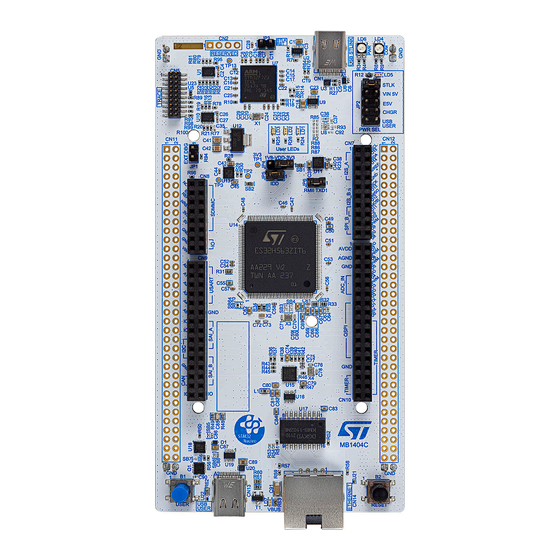
Table of Contents
Advertisement
UM3115
User manual
STM32H5 Nucleo-144 board (MB1404)
Introduction
The STM32H5 Nucleo-144 board based on the MB1404 reference board (order code NUCLEO-H563ZI) provides an affordable
and flexible way for users to try out new concepts and build prototypes, by choosing from the various combinations of
performance and power consumption features provided by the STM32H5 series microcontroller.
®
The ST Zio connector, which extends the ARDUINO
Uno V3 connectivity, and the ST morpho headers provide an easy
extension of the functionality of the STM32 Nucleo open development platform with a wide choice of specialized shields.
The STM32H5 Nucleo-144 board does not require any separate probe as it integrates the STLINK-V3EC debugger/
programmer.
The STM32H5 Nucleo-144 board comes with the STM32 comprehensive free software libraries and examples available with the
STM32CubeH5
MCU Package.
Figure 1.
NUCLEO-H563ZI top view
Figure 2.
NUCLEO-H563ZI bottom view
Pictures are not contractual.
UM3115 - Rev 1 - February 2023
www.st.com
For further information contact your local STMicroelectronics sales office.
Advertisement
Table of Contents















Need help?
Do you have a question about the STM32H5 Nucleo-144 and is the answer not in the manual?
Questions and answers